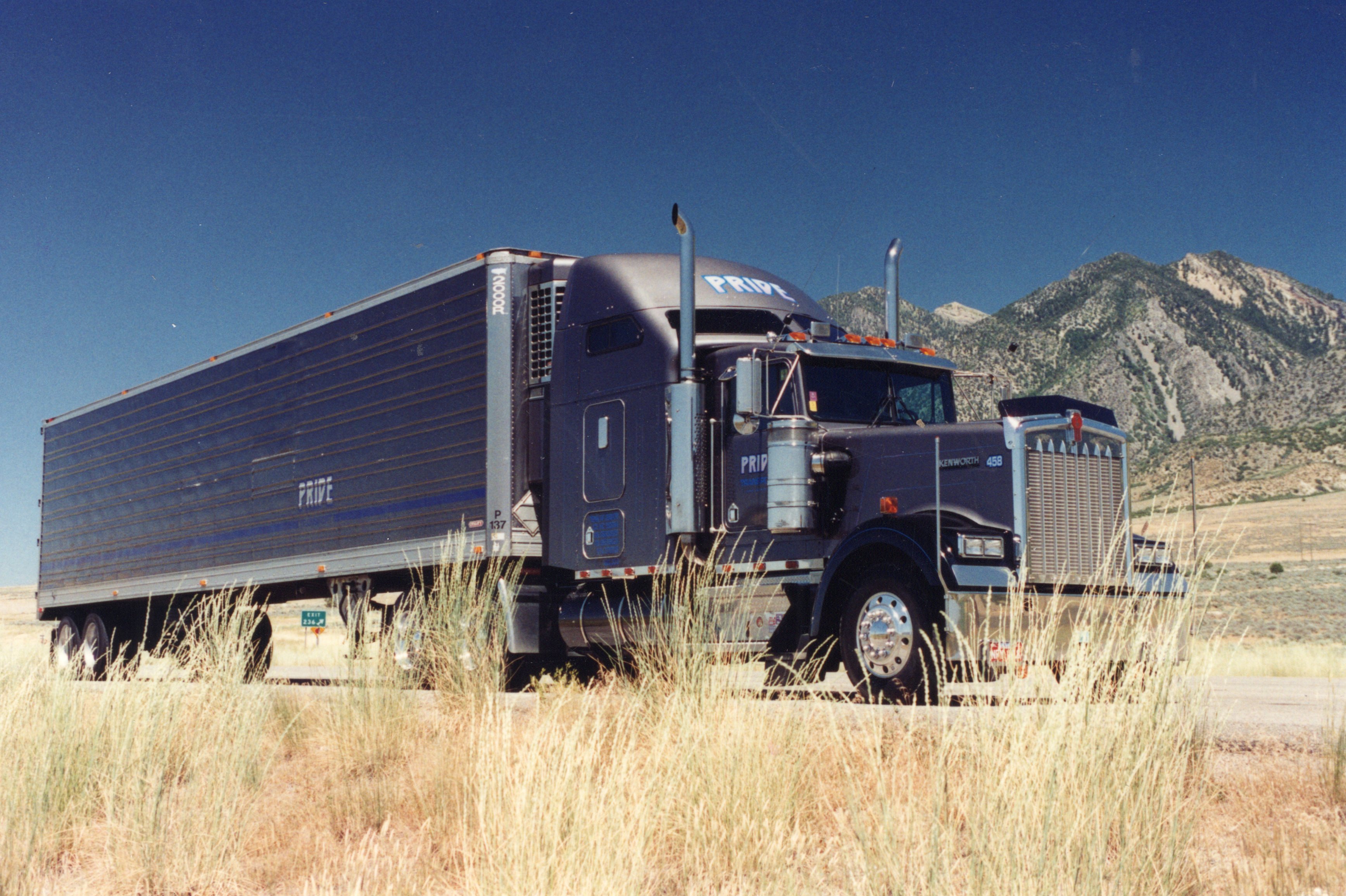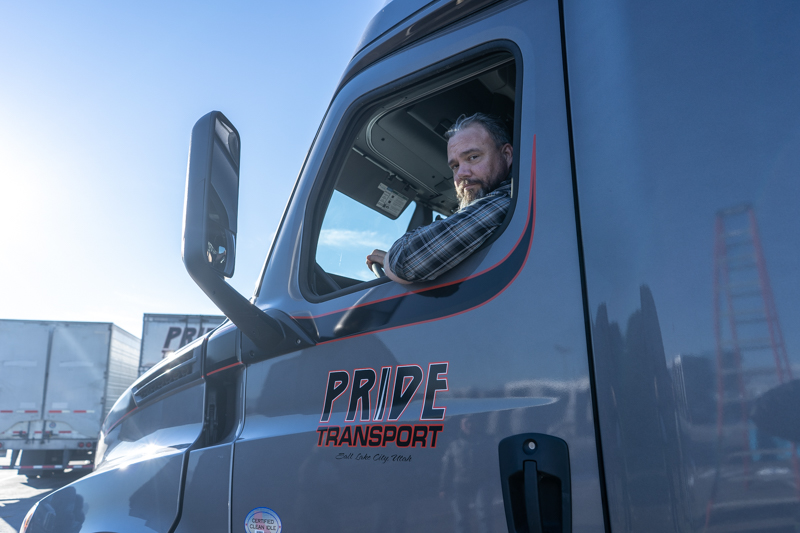by Pride Transport | Jun 20, 2024
Truck drivers and the trucking industry are vital parts of the American economy. With over 2.9 million semi-trucks registered in the country in 2023 and over $940.8 billion in gross freight revenue alone in 2022, it’s clear that the trucking industry is booming.
But how exactly did this industry grow to be such an important part of the country’s supply chain?
The Start of The Industry: 1896
The trucking industry got its start at the start of the twentieth century. It all began in 1896 with the first “truck,” a horse-drawn cart named Phoenix. It had a four-horsepower, two-cylinder engine created by inventor, Gottlieb Daimler.
It wasn’t long until businesses formed around the new concept. In 1900, Jack and Gus Mack created Mack Trucks, the first trucking corporation. These early trucking companies were responsible for transporting goods further than horses and carriages could — particularly as demand increased over longer distances. Motorized trucks soon replaced horse-drawn and steam-engine counterparts, helping move more items faster.
Growth and Regulations in the 1930s to 1950s
Initially, trucks were used for small, local deliveries. However, when the Great Depression occurred, things began to change. General Motors introduced their first diesel-powered truck, and drivers were in demand.
The problem, though, was that many entrepreneurs took advantage of those drivers and the reduced competition caused by the depressed state of the economy. As a result, drivers were often asked to work long hours and, in many cases, in dangerous conditions. The American Trucking Association was formed in 1933 in response to those problems, hoping to protect the interests and safety of truck drivers in the USA.
The Motor Carrier Act of 1935 passed shortly thereafter, opening trade between the states without any tariffs or fees. The new change led to an expansion in the industry, and by 1937, around 500,000 trucks were operating all around the country.
It wasn’t long after this that World War II ended in September of 1945. Interestingly, 1945 was also the year that Mack Trucks released the “Super Duty” series of trucks.
The Interstate Highway System
A little over a decade later, The Federal-Aid Highway Act of 1956 became law on June 29. It was at this time that Congress officially authorized the Interstate Highway System. This highway system was highly innovative, leading to safer roads and more efficient travel between states.
Before this system was put into place, roads were often unpaved. They could be muddy or difficult to pass. However, the partnership between the Federal and State governments meant roads could be improved and, perhaps more importantly, paved.
It’s also because of this act that the national network of connected highways used today was established. It was, at the time, made up of 41,000 miles of interconnected highways stretching from coast to coast. The increased efficiency of not having to stop at every small town or city and being able to bypass slowdowns meant long-haul capabilities were improved, and the American supply chain was immediately changed for the better.
Deregulation and Modernization
The Motor Carrier Act of 1980 led to industry deregulation. With this act, the government’s control over the trucking industry was reduced, making it simpler for new businesses (and carriers) to get started within the industry.
The act also encouraged price competition, which, while good for consumers, was of concern to the International Brotherhood of Teamsters. The union claims that there were extensive layoffs as a result of the passage of the act, particularly among smaller shippers and those serving small towns.
Deregulation also led to an uptick in new carriers, which have continued to increase in number since 1977. The growth in the trucking industry isn’t a bad thing, because with today’s logistics and supply chain management needs, having enough truck drivers to transport goods is essential.
Technological Advancements in Trucking
The introduction of diesel engines to the trucking industry was another huge leap forward. By the 1960s, they were the main engine type used in the trucking industry and capable of powering vehicles to move larger loads than ever before.
That advancement was just one of several that have made a major impact on the supply chain and this industry, though. Another was the development of refrigerated units, which meant perishable items could now be transported all over the United States (and sometimes beyond).
Mechanical refrigeration systems became popular in 1939 when Fred Jones and Joseph Numero created the first portable cooling unit that could keep trucks cool automatically. Although that invention could be used in multiple cases (in train cars and boats, for example), it was the start of what you know as “reefer” trucks today.
This invention is particularly close to our hearts at Pride Transportation — we are a refrigerated trucking company and are proud to continue using refrigeration to move perishable items, such as much-needed medications and supplies, all around the country.
The Digital Age
Like in all other industries, today’s technology has made an impressive impact on the trucking industry. Starting in around the 1980s, advancements in tech have continued to change how the trucking industry runs.
Vehicles in 2024 now benefit from tools such as the integration of GPS and electronic logging devices, internet, and digital freight matching. Artificial intelligence is beginning to make its way into vehicles, which well into the future, could become autonomous.
Artificial Intelligence in the Trucking Industry
For now, artificial intelligence is having the greatest impact on route planning, driver assistance and accident prevention, predictive maintenance, driver monitoring, and data collection. For example:
- AI route planners can use GPS devices, user-submitted traffic data, traffic cameras, and other tools to determine the safest, most efficient route.
- Automated driver assistance systems (ADAS) and sensor technology can help reduce the likelihood of getting into a crash.
- Predictive maintenance can help fleets stay in their best condition thanks to an AI that identifies parts that are becoming worn or damaged.
- Driver monitoring systems (DMS) help improve safety by identifying signs of fatigue.
- Data collection helps businesses make data-driven decisions about their fleets and drivers so they can respond to changes in fuel consumption, performance data, and other factors that may affect their return on investment (ROI).
Build a Career With Pride
At Pride Transport, we’re committed to continuing a proud history in the trucking industry. With our eye on safety, efficiency, and a team of qualified drivers, we’re ready for whatever comes our way. Ready to join the team? Check out our current job openings and apply to drive with Pride.

